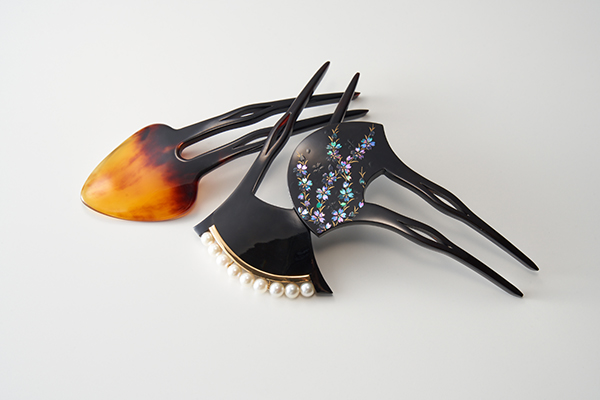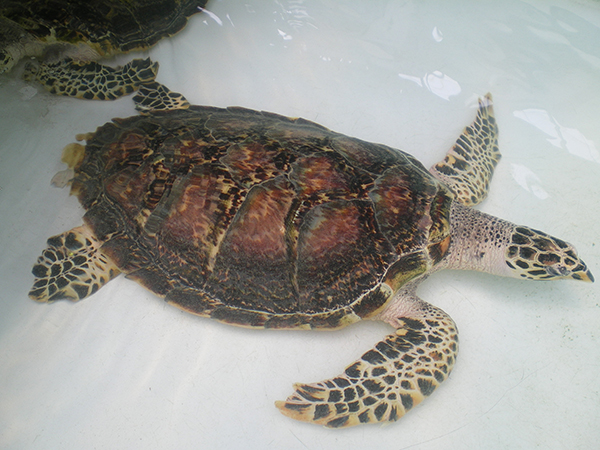Ocean Newsletter
No.561 December 20, 2023
-
Can the Safety of the Japan Coast Guard be Ensured under the Control Guidelines?
KANEHARA Atsuko(Professor, Sophia University, Policy Advisor to the Japan Coast Guard)
Under Article 80 of the Self-Defense Forces Law, the Japan Coast Guard may be placed under the control of the Minister of Defense. According to Article 25 of the Japan Coast Guard Law, the Japan Coast Guard is a police organ, or a law enforcement organ, and so there are restrictions on its use of weapons under domestic law. However, are there means for the Japan Coast Guard, as a non-military organ, to ensure its safety under international law in relation to foreign countries, especially hostile countries, while under the control of the Minister of Defense in the event of an armed attack against Japan, by avoiding of being a military objective?
-
Securing Stable Raw Materials for Tortoiseshell Crafts and the Development of Land-based Farming Techniques for the Hawksbill Sea Turtle
OHSAWA Kengo (President of the Tokyo Bekko (Tortoiseshell) Cooperative Association)
Japan’s traditional tortoise shell crafts have long relied on the importation of Hawksbill Sea Turtle shells for their raw materials, but due to the present restrictions of the Convention on International Trade in Endangered Species of Wild Fauna and Flora (CITES) the industry has lost its source of raw materials. In order to pass on these traditional crafts to the next generation, all those in the industry are now combining their efforts in a hawksbill sea turtle farming project. As a symbol of Japan’s harmony with the ocean since ancient times, we intend to pass on the art of tortoise shell crafting to future generations.
-
The Challenge of the Fish Elementary School ~Providing marine education to children especially because we are an island nation~
SUZUKI Makoto(Representative, Japan Sustainable Seafood Association )
"Fish Elementary School" is an online educational program for elementary school students and their parents provided by the Japan Sustainable Seafood Association. Each month, we offer easy-to-understand classes based on a single seafood theme using real fish, displays or models, and learn about ecology, fisheries, food culture, environmental issues, etc. While ocean education in the school system is limited, our aim is to promote sustainable use of ocean resources by increasing ocean literacy through Fish Elementary School.
Securing Stable Raw Materials for Tortoiseshell Crafts and the Development of Land-based Farming Techniques for the Hawksbill Sea Turtle
Japan’s traditional tortoise shell crafts have long relied on the importation of Hawksbill Sea Turtle shells for their raw materials, but due to the present restrictions of the Convention on International Trade in Endangered Species of Wild Fauna and Flora (CITES) the industry has lost its source of raw materials. In order to pass on these traditional crafts to the next generation, all those in the industry are now combining their efforts in a hawksbill sea turtle farming project. As a symbol of Japan’s harmony with the ocean since ancient times, we intend to pass on the art of tortoise shell crafting to future generations.
Tortoiseshell Crafts, Japan’s Traditional Craft Designated by the Ministry of Economy, Trade and Industry, are Impacted by CITES
In recognition of this historical background, Edo tortoiseshell crafts, primarily from the Kanto region, were designated as traditional Japanese crafts by the Ministry of Economy, Trade and Industry in 2015, followed by Nagasaki tortoiseshell crafts, centered in the Nagasaki region, in 2016. However, though hawksbill sea turtle shells, the primary raw material for tortoiseshell crafts, are mostly imported from countries where the consumption of these turtles is part of their culture, these turtles are classified in Appendix I of CITES, the highest level of protection. In 1994, the Japanese government withdrew its reservation measures, which had been providing protection for this traditional culture under CITES, significantly impacting the tortoiseshell industry's access to raw materials.
Prior to this decision, in 1991, the Japanese government established a relief fund for the tortoiseshell industry, and the Japan Bekko Association (at the time an incorporated association, but now a general incorporated association2) was established in January 1992. Initially, the association aimed to resume limited importation of hawksbill sea turtles under the provisions of CITES. However, as the road ahead was steep, in April 2001 it shifted its focus to researching domestic land-based farming of hawksbill sea turtles for a stable supply of raw materials. It was decided that this research project would be undertaken in collaboration with the Ministry of Economy, Trade, and Industry.

■ Figure 1: A Tortoiseshell Hairpin
Details of the Development and Current Status of Land-based Hawksbill Sea Turtle Farming Techniques
The initial turtle farming project was a joint development with Churaumi Aquarium, Port of Nagoya Public Aquarium, and the Sea Turtle Association of Japan, focusing primarily on the artificial breeding of sea turtles. Yaeyama Tropical Station of the Seikai National Fisheries Research Institute, Fisheries Research Agency (currently known as the Japan Fisheries Research and Education Agency) joined the research, and in 2005 Ishigaki City Hall Fisheries Division also became a part of the research team. Then, in 2007, IDEA Consultants Inc., a consulting firm specializing in cost calculations for farming came on board, bringing the project mostly to its current state. Of note, after the participation of the Seikai National Fisheries Research Institute, the main site of the farming project moved to Ishigaki Island in Okinawa Prefecture, achieving successful results in artificial breeding on outdoor artificial beaches.
In 2008, the Youth Division of the Tokyo Bekko (Tortoiseshell) Cooperative Association was established. It started calculating costs with related organizations, looking towards the full-scale commercialization of land-based hawksbill sea turtle farming. However, the initial cost per turtle significantly exceeded the industry's expectations, making it extremely challenging to reconcile with the current prices of raw materials. To reduce costs, various measures were considered, including adjusting the frequency and type of feeding, heating/non-heating of tanks, researching additives to accelerate growth and reduce the years of cultivation, and reevaluating farming locations. However, the costs of leasing the farming site, equipment investment, and labor, which are significant, remain a major barrier and are still an issue today.
Despite these cost-related issues, in 2011 prototype items were created using mature farmed hawksbill turtles. Exhibitions were held in Okinawa, Tokyo, Nagasaki, and Osaka, demonstrating that the shells of farmed hawksbill turtles are suitable for tortoiseshell crafts. With the primary goal of securing a stable supply of raw materials for the tortoiseshell industry, 2017 marked the commercialization of land-based hawksbill sea turtle farming. Currently, the industry-funded Ishigaki Tortoiseshell Co., Ltd., specializing in hawksbill sea turtle farming, is operated by tortoiseshell industry specialists, who also serve as board members. Considering the approximately 1,400-year history of tortoiseshell products stored in Todaiji Temple’s Shosoin Repository, the industry is committed to the preservation and development of hawksbill sea turtle farming, including the tortoiseshell used in the Rite of Designating Saidens of the emperor’s enthronement ceremonies, in order to pass on tortoiseshell crafts as traditional crafts to future generations.

■ Figure 2: Farmed Hawksbill Turtles
Ocean Resource Recovery and the Future of Tortoiseshell Crafts from Land-Based Farming
Currently, Ishigaki Tortoiseshell Co., Ltd. is raising over 400 hawksbill sea turtles and has successfully hatched over 100 turtles annually. By adjusting temperature and salinity levels to replicate on land the marine environment as closely as possible, the company has reduced stress on the turtles. It has also advanced research on feed that promotes healthy and natural growth, resulting in successful breeding in artificial beach environments. These efforts definitely contribute to the recovery of hawksbill sea turtles as a marine resource and represent a sustainable business model that allows harmonious coexistence between man and nature.
The use of raw materials for current tortoiseshell products has significantly decreased compared to the bubble economy in the 1980s. If the raw materials supplied from this farming business remain stable, it will be possible to maintain this traditional craft. Unfortunately, it cannot be denied that tortoiseshell products, which are perceived as a luxury product, contributed to the decline in the hawksbill turtle population, a negative aspect of the past economic boom.
Tortoiseshell products like kanzashi hairpins, a mainstay of traditional Japanese attire, and luxurious tortoiseshell glasses are renowned for their unique beauty, texture, and lightness that cannot be replicated by artificial materials. However, this material’s most significant feature is its ability to bond together using only heat, water, and pressure, without the need for adhesives or chemical substances. Furthermore, even if these products break or get damaged, they can often be repaired using the same techniques, allowing cherished tortoiseshell items to continue to be used. Originally, tortoiseshell, seen as a representative decorative item of Japan since the Edo period, was treated as a lifelong treasure. For raw materials, only the shells of hawksbill sea turtles were imported from cultures that consume the turtle as food, which ensured that no part was wasted in their use and distribution, resulting in it being a sustainable industry that valued resources, people, and materials—similar to what we now call Sustainable Development Goals (SDGs). Following these teachings from our predecessors, tortoiseshell artisans involved in the fisheries business continue to ensure that those parts of the hawksbill turtle other than the shell are not wasted. The meat is processed for consumption, and the skin is utilized as material for leather products, ensuring full utilization. This approach reflects a respectful use of natural resources, in recognition of being gifted with a creature’s life. At the same time, it embodies the desire to continue treating tortoiseshell, with its long history, as a symbol of the harmony between man and the ocean, a tradition that has existed since ancient Japan. (End)
2. Japan Bekko Association: http://www.bekko.or.jp/
